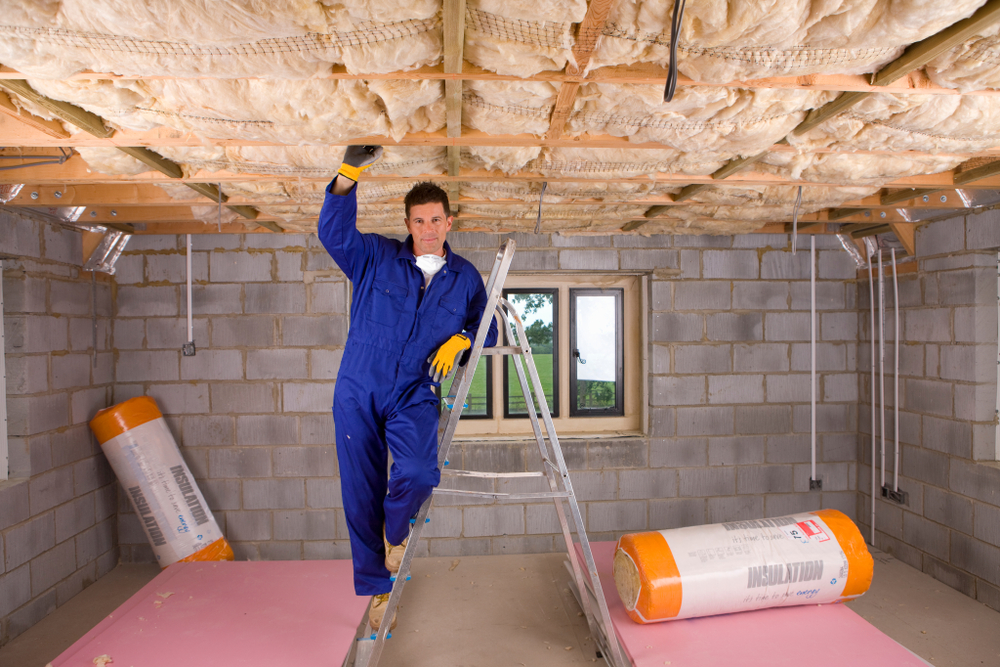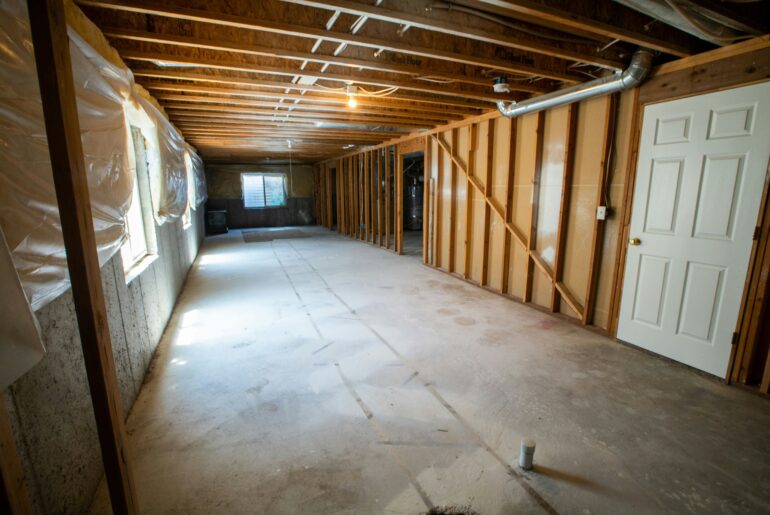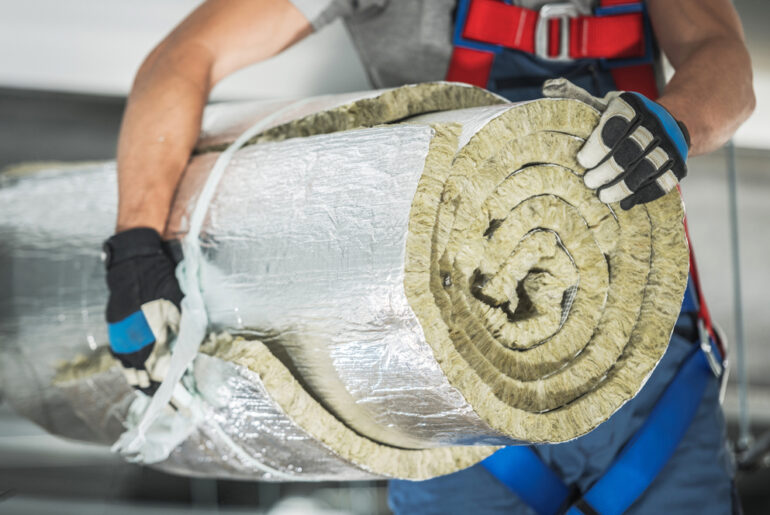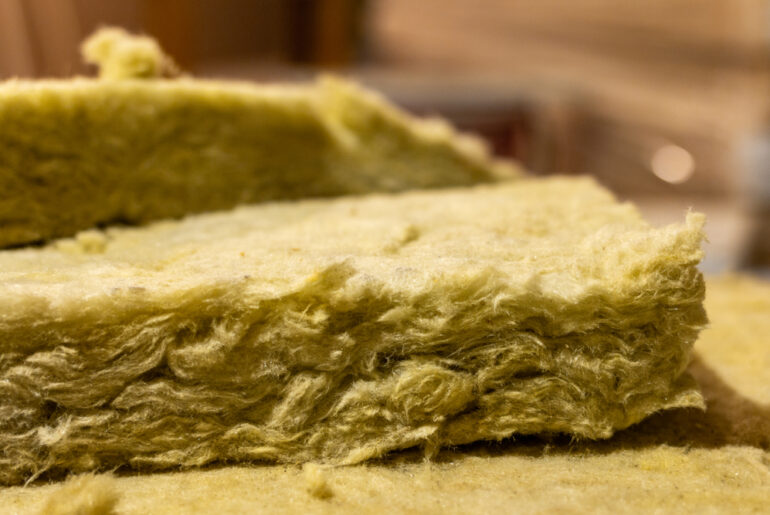Because basements are popularly known as utility spaces and are often unoccupied, many homeowners do not consider the possible dangers they could cause if left unchecked. Basement insulation, for example, is one of the many things that people ignore. The thing is basement insulation that is “exposed,” “bare,” or “uncovered” is hazardous.
Exposed insulation in the basement—and other occupied areas—is dangerous and can pose a risk to one’s well-being according to different health organizations. It can cause skin allergy, eye irritation, and respiratory problems. Exposed insulation, regardless of the material used, is also recognized as a fire hazard. It is likely possible to catch fire if the insulation is untreated too.
Now, the question is, are all insulation materials unsafe?
In this blog post, we will explore the dangers exposed insulation in the basement can result in if not covered properly. We will also tackle which material is the safest and which one can pose great harm to you and your family’s health.
Why Exposed Insulation Is Dangerous?
Skin Allergy And Irritated Eyes
Exposed insulation can cause skin allergies and irritated eyes. It is particularly true with fiberglass insulation.
Fiberglass is a synthetic material that contains glass fibers. If left exposed, its particles will likely scatter in the air and can penetrate the skin if it comes into contact with the material. It can lead to pain and skin irritation, soreness in the nose, as well as eye redness and irritation, according to Agency for Toxic Substances and Disease.
Cellulose insulation, on the other hand, does not trigger skin and eye irritation even if it is left uncovered.
Harmful Breathable Particles
Exposed insulation such as fiberglass, rigid foam, and spray foam contain harmful elements that can pose health risks to people when inhaled. The carcinogenic chemicals that are found in rigid foam insulation, for example, can cause cancer, while the glass fibers from fiberglass insulation can act as a respiratory irritant and pose respiratory issues like bronchitis.
Fire Hazard
Exposed insulation in the basement is also considered a fire hazard. Spray foam insulation, for instance, is naturally a “combustible” material and will ignite at 700 degrees Fahrenheit.
The same goes for cellulose insulation since it is primarily made of paper—a highly combustible type of material. The Consumer of Product Safety Commission (CPSC) also declared the material a fire hazard even if it is properly treated with fire-retardant chemicals.
Fiberglass and mineral wool insulation are also susceptible to fire.
Mold and Mildew
Exposed insulation is also susceptible to mold and mildew buildup, especially in basements with high Relative Humidity (RH). The thing is mold and mildew are known as allergy-causing fungi.
If inhaled, these small organisms can cause a number of allergy reactions and health problems. These include itching, runny nose, sneezing, coughing, wheezing, and even difficulty breathing. Constant exposure to mold exposure can also lead to fatigue and headache, while regular exposure can cause severe allergic reactions, as well as increase the person’s sensitivity to mold and mildew.
Certain types of molds can also lead to a serious respiratory problem called “aspergillosis.” And the symptoms may vary breathing problems, coughing, headache, and weight loss.
Types of Insulation and Dangers of Exposing Them
Fiberglass Insulation
Fiberglass is an insulation material that is primarily made of glass fibers. Glass fibers are also known as synthetic mineral fibers and are the most accessible and most used type of insulation material across the US.
Fiberglass insulation—batts and rolls and rigid foam, to be specific—is traditionally installed in attics, crawl spaces, walls, and even basements. However, while it is a highly efficient insulation material, it is rarely installed in basements. Professional builders don’t even recommend it because (a) fiberglass is air permeable and holds moisture, (b) it is prone to mold and mildew buildup, and (c) it releases particles that are harmful and can cause allergic reactions.
It is much worse if fiberglass insulation in the basement is exposed.
The Dangers of Exposed Fiberglass Insulation
Several health experts explained why exposed fiberglass insulation is hazardous. Krysten Godfrey of The American Lung Association, for example, said that exposed fiberglass insulation—whether it is in the basement or attic—can cause respiratory and allergic reactions when particles of glass fibers spread in the air. These include dry and scratchy throat, coughing, as well as eye and skin irritation.
Glass fibers can act as a respiratory irritant too and cause mild to severe respiratory problems such as bronchitis. Asthma patients, as well as those who regularly smoke, are more vulnerable compared to those who are not.
On the other hand, current studies suggest that high and constant exposure to fiberglass insulation does not endanger anyone from developing cancer-related health problems.
Fiberglass insulation is also considered a fire hazard. And that is despite the fact that it is a naturally non-combustible material. It is even used as a fire block in wood frames.
But the thing is, it uses combustible materials like kraft paper and foil as facings which can catch fire.
To summarize it all, below is a list of possible dangers fiberglass insulation can pose.
- Skin allergies
- Eye redness and irritation
- Runny nose
- Sneezing and coughing
- Difficulty breathing
- Headache and fatigue
- Serious respiratory problems such as bronchitis
- Fire hazard
Spray Foam
Spray foam—which is available in open-cell and closed-cell—is an insulation material and an air barrier used to seal floors, walls, and cavities. Its primary function is to halt air movement within assemblies.
In the basement, both open-cell and closed-cell spray foams can be used and installed on walls as insulation material. It is often used to prevent ground moisture from penetrating the walls which usually results in mold and mildew buildup.
Can Spray Foam Be Left Exposed?
It is a misconception many homeowners fail to understand and ignore and often resort to covering all exposed spray foam insulation. While it is not wrong, that would not be cost-effective. It is because, unlike fiberglass insulation, spray foam can be either left exposed or not, depending on what the house code says.
According to the International Residential Code (IRC R316.4) and the International Building Code (IBC2603.4), all plastic foam insulation—including spray foam—must be parted from the interior of the assembly or house by an approved 15-minute thermal barrier such as a ½ inch gypsum wallboard.
Moreover, the use of a thermal barrier is also optional as long as certain conditions are met. Specifically, it is when the entry is limited to the service of utilities only. The foam insulation must be covered using an ignition barrier as a substitute for a thermal barrier. And per Section 316.5.3 of the International Residential Code, ignition barriers are defined as the following:
- ¼” hardboard
- 1 ½” mineral fiber insulation
- 3/8” gypsum board
- 16 mils corrosion-resistant steel
- 3/8” particle board
- ¼” wood structural panel
On the other hand, building and house codes allow spray foam insulation without thermal, or ignition barriers as long as the assembly passes special fire tests. But keep in mind that spray foam is a combustible material and will ignite when the temperature reaches 700 degrees Fahrenheit.
Dangers of Exposed Spray Foam
Spray foam insulation poses several risks not only to your health but also to your house. As mentioned, the insulation material is highly flammable and will ignite at 700 degrees Fahrenheit. It is why it is crucial to separate it from the house or the building’s interior using a 15-minute thermal barrier.
In terms of its effects on your health, spray foam insulation was found to have chemicals that are harmful when inhaled. Per the California Department of Toxic Substance Control, one of the insulation material’s contents is methylene diphenyl diisocyanate, which could trigger several health issues, including asthma and impaired lungs. The US Environmental Protection Agency gave a similar claim as well.
Rigid Foam
Can Rigid Foam Be Left Exposed?
The answer to whether rigid foam can be left exposed or not is partly yes and partly no. Rigid foam is a highly flammable insulation material and therefore requires a thermal barrier to prevent incidents such as housefire. However, per the IBC and IRC, they allow a special permit if the foam itself can pass the NFPA 286 fire tests.
The Dangers of Exposed Rigid Foam Insulation
Rigid foam is naturally a combustible material and is highly flammable. Hence, it is recognized as a fire hazard. Such a drawback, however, can easily be fixed by installing a thermal barrier between the material and the assembly’s interior.
When it comes to its health effects, rigid foam insulation contains harmful chemicals that can be carcinogenic if regularly exposed and cause a person to develop cancer. Rigid foam insulation contains a toxic flame retardant HBCD. Per EPA, the contaminant poses a great threat to a person’s well-being. It is particularly more dangerous during manufacturing and disposal.
List of dangers as a summary at the end:
- Fire hazard
- Can cause cancer
What Basement Insulation Can Be Exposed?
Although proper insulation covering serves a variety of purpose that benefits everyone’s well-being and safety, two separate safety building codes permit a few insulation materials that can be left exposed. And these insulation materials are spray foam and fiberglass.
Leaving basement insulation exposed is only permissible in certain instances, however, according to the International Building Code and International Residential Code.
Here are the scenarios where the insulation material in the basement can be left exposed.
When Fiberglass Can Be Exposed
Fiberglass insulation is naturally resistant to fire except, as discussed earlier if its facings are made from a paper-based material such as kraft and foil. Per IRC, leaving the insulation material bare is only permitted if the facings are made from a specialized fire-resistant foil or kraft.
If the fiberglass insulation does not have facings, to begin with, then leaving it exposed is okay too. Apart from that, if the insulation material is installed with one facing placed against the wall or sheetrock, leaving it uncovered is permissible and considered safe. The idea is that if the facings would not catch fire, then leaving fiberglass insulation exposed is okay.
When Spray Foam Insulation Can Be Exposed
The IRC and IBC state that all foam plastic insulation must not be left bare. As mentioned, spray foam is a natural combustible material. Thus, it must have a 15-minute thermal barrier that separates the insulation material from the building’s interior to ensure that it would not catch fire.
However, both codes also give special approvals that allow leaving spray foam insulation exposed as long as the building meets all requirements organizations provided. The material must pass several fire tests to prove that it has equivalent performance—in terms of fire resistance—to alternate assemblies.
The fire tests are generally related to the end-use configuration of the insulation material. A few of the fire testing include NFPA 286, FM 4880, UL 1040, and UL 1715. For more information, you can check out the American Chemistry Council’s guide to using spray foam insulation.
How to Cover Insulation in a Basement
Covering exposed insulation in the basement usually varies depending on the material. That said, below are a few tips on how to cover exposed fiberglass, spray foam, and rigid foam insulation in basements.
How to Cover Fiberglass in a Basement
Covering exposed fiberglass insulation in the basement is not a piece of cake. There are several solutions to do it and it is important to pick the best method and material that suits fiberglass. But the common material installers and homeowners use is plastic sheeting.
Plastic sheeting helps to contain the dust particles fiberglass release when disturbed. It also requires no demanding installation process as it needs to be stapled over the insulation material only.
Moreover, consider a covering material that is air permeable and would not trap moisture. Here are a few more solutions on how to cover fiberglass insulation in the basement:
- Install sheetrock or paneling over wall insulation
- Install plywood flooring (if insulation is installed on the floor)
- Hire a professional and credible fiberglass insulation installer
How to Cover Spray and Rigid Foam in a Basement
We already discussed spray foam as a highly flammable material. And for this very reason, covering an exposed spray foam insulation requires a specific barrier. Per IRC and IBC, the insulation needs a 15-minute thermal barrier.
Ignition barriers such as gypsum sheetrock work as well. However, do take note that ignition barriers are not as necessarily protective as thermal barriers.
The same coverings work with rigid foam insulation as well. The IRC and IBC require that all types of foam insulation must use a thermal barrier.
How to Cover Basement Insulation Without Drywall?
Drywall is a popular construction material used in building interior walls, including the basement. Not to mention that it is also cheaper compared to its counterparts such as concrete and bricks.
Still, there are other alternatives you can use that are also cheap and suitable as insulation covering:
- Texture wall panels
- Concrete blocks
- Cement board
- Brick and masonry
- Plywood
- Veneer plaster
- Corkboard
How To Cover Insulation in Basement Ceiling
Exposed insulation in the basement poses several health risks indeed. Not to mention the unsightly look of utilities, wirings, and ductwork. As such, if you are planning to use your basement other than as a utility space, it is best to cover it first
Here are a few permanent and temporary coverings you can use:
Drop Ceiling
Also known as a suspended, false, and T-bar ceiling, a drop ceiling is a widely used method in covering up exposed insulation in the basement ceiling. It is a secondary ceiling installed underneath the main ceiling and is used specifically to hide utilities like electrical wiring, pipes, and ductwork.
And while there are a variety of drop ceilings available today that is fit for any type of room in terms of aesthetics, it is commonly—and most suitable—to use and install in basements and garages. And it is because its framework makes it easier for professionals and DIYers to reach and access utilities that are usually found in basements and garages—unlike drywall ceilings.
A drop ceiling is easy to install too. However, it is relatively expensive to build compared to other insulation sheathings such as drywall.
Drywall
A drywall ceiling, on the other hand, is built by screwing and taping pieces of sheetrock panels together. It is one of the most convenient and affordable insulation covering materials builders and homeowners use not only in the basement but in other areas of the house as well.
A drywall ceiling is typically used for aesthetics, given that it has a smooth surface. It is, however, not recommended to use in covering up electrical wirings, ductwork, and other utilities that may require attention and repair in the future.
Fabric
Lastly, you can also use fabric as a temporary covering. It will help reduce the industrial vibes that wirings, bare ceiling joists, and insulation give off. It is best to use a certified fire-retardant fabric too. Although you can also apply and treat it using fire-repellent chemicals.
Do take note that this option is only for temporary use as it cannot fully protect you from the health risks that exposed insulation can cause.
Sources:
- Rhode Island Department of Health at health.ri.gov
- American Chemistry Council
- US Environmental Protection Agency
- Agency for Toxic Substances and Disease at cdc.gov
- Washington State Department of Health at doh.wa.gov





